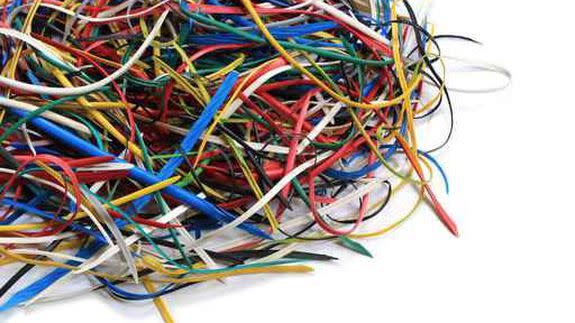Scientists have figured out how to make wires 60,000x smaller than a human hair

Microbiologists at the University of Massachusetts Amherst have found a way to make electrical wires that are thousands of times thinner than a human hair.
The secret? The "microbial nanowires," or little hair-like protein filaments, or pili, produced by genetically modified soil bacteria, Geobacter sulfurreducens. Researchers manipulated the bacteria to spin out very fine but highly conductive wires composed of natural amino acids.
They replaced two naturally occurring amino acids in the Geobacter bacteria with tryptophan, (yes, the tryptophan that makes you sleepy on Thanksgiving), and found that it was 2,000 times more conductive. They also became smaller and more durable, with a diameter of 1.5 nanometers (rough 60,000 times thinner than a human hair).
SEE ALSO: Virtual reality allows scientists to walk into a cancer cell
Dr. Derek R. Lovley, the team's lead researcher, said that the wires can be sustainably produced since they are made from inexpensive materials, one example being acetic acid, the main ingredient in vinegar that can be made by fermenting bacteria.
"We are very excited about the possibilities for synthetic biological wires," he told Mashable in an email. "...It is expected that the biowire will be incorporated into various polymer materials to make new types of biocompatabile flexible electronics and even new types of devices for harvesting solar energy."
And they quite a few other possible uses in nano electronics, such as tiny computers from bacteria that can "receive data as an electrical signal, do computations, and then produce an electrical output." They might also be useful in medical sensors, as they are sensitive to pH changes that can monitor heart rate or kidney function.
The experiment was funded by the Office of Naval Research, so it's no surprise that there are also military benefits. The nanowires could feed electrical currents to microbes and create butanol, a fuel more functionally similar to gasoline than ethanol. This could be produced in remote locations like Afghanistan, where it's currently very expensive to transport fuel. The nanowires may also power other microbes that can signal pollutants, toxins or explosives.
And, of course, it's possible that these tiny wires could help sate the demand for more memory on ever-smaller phones. (Please.)
